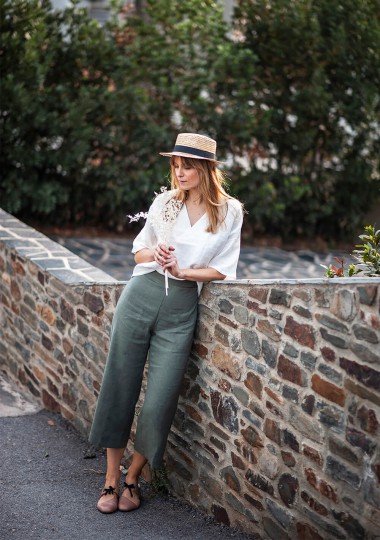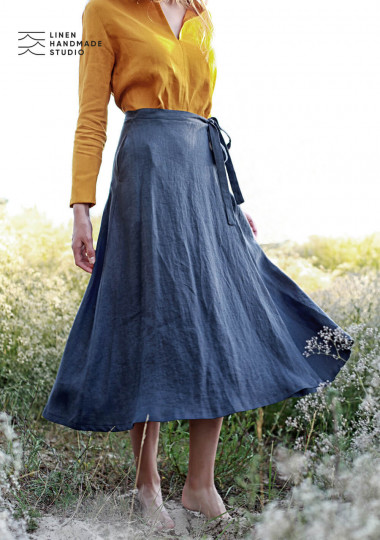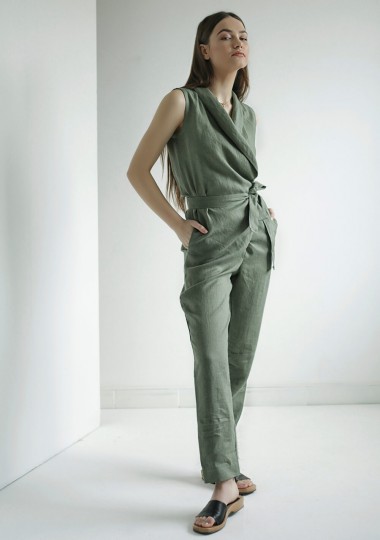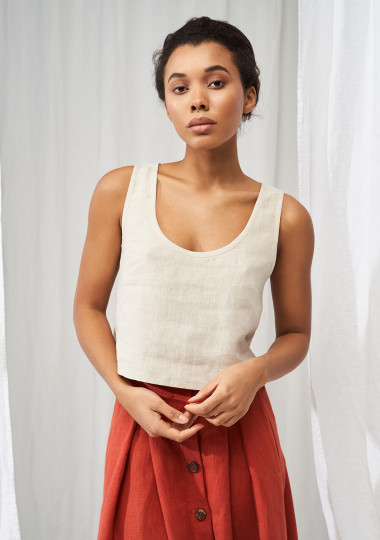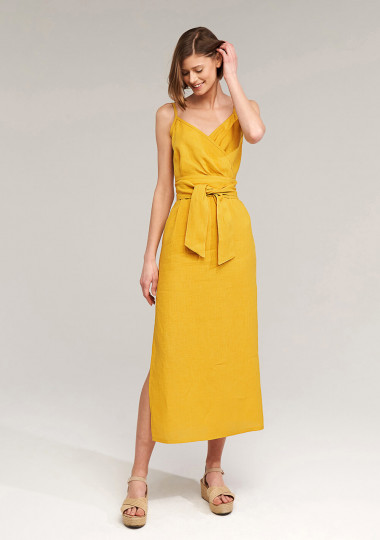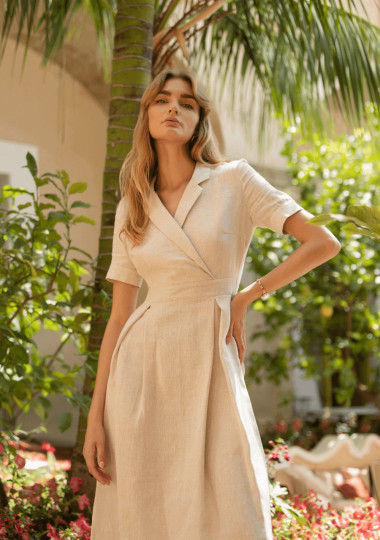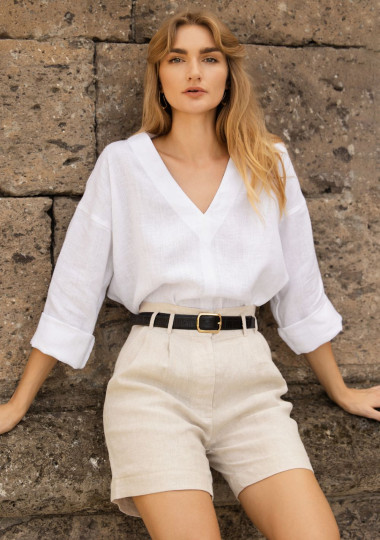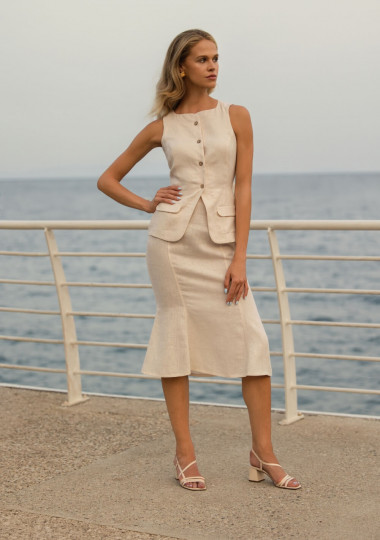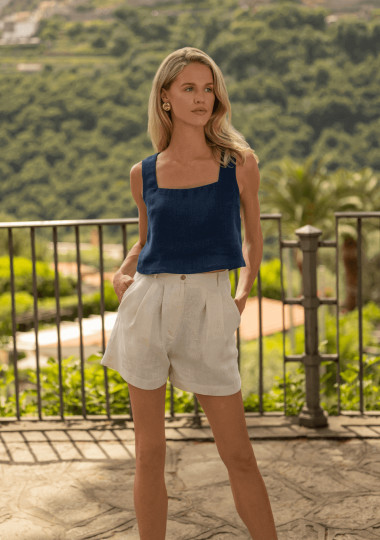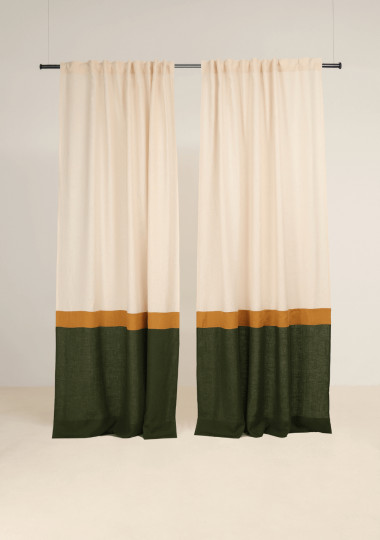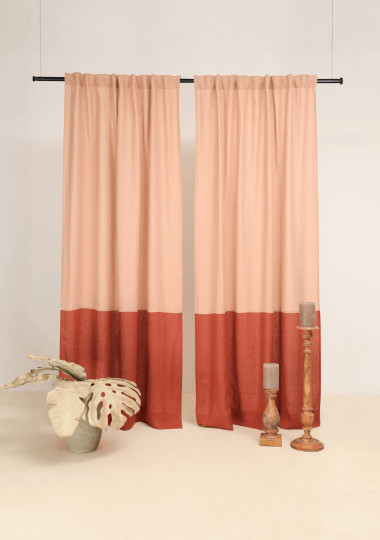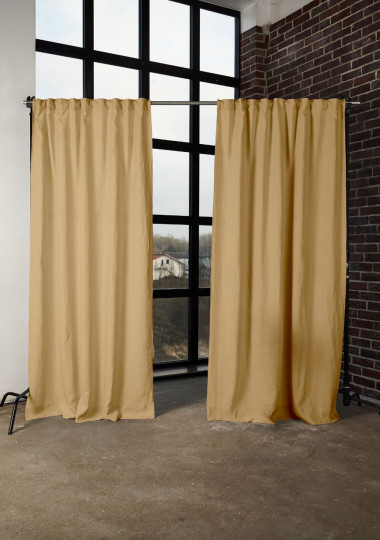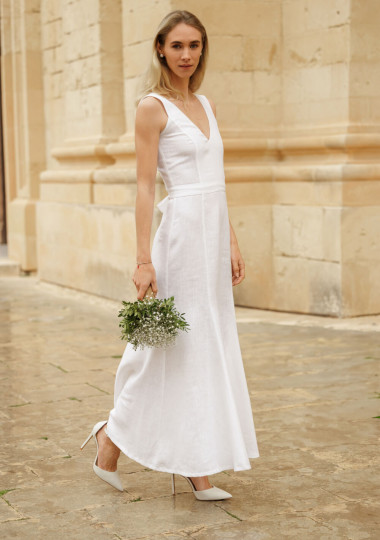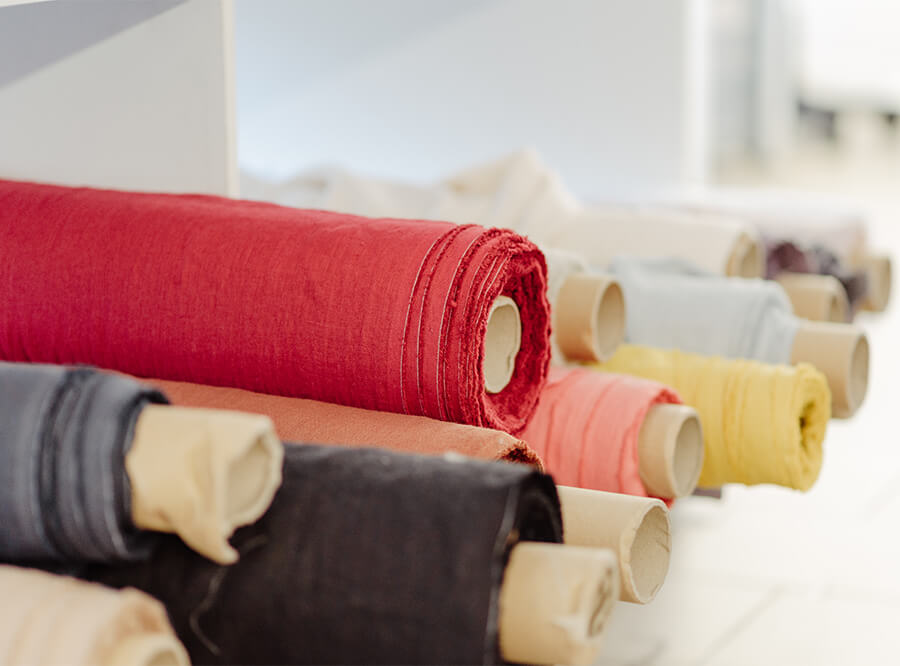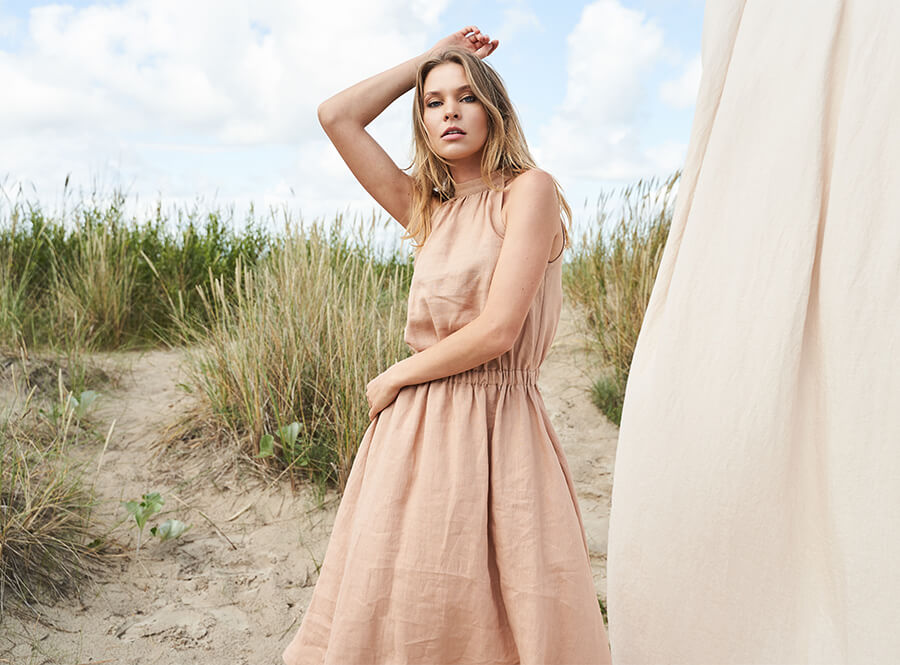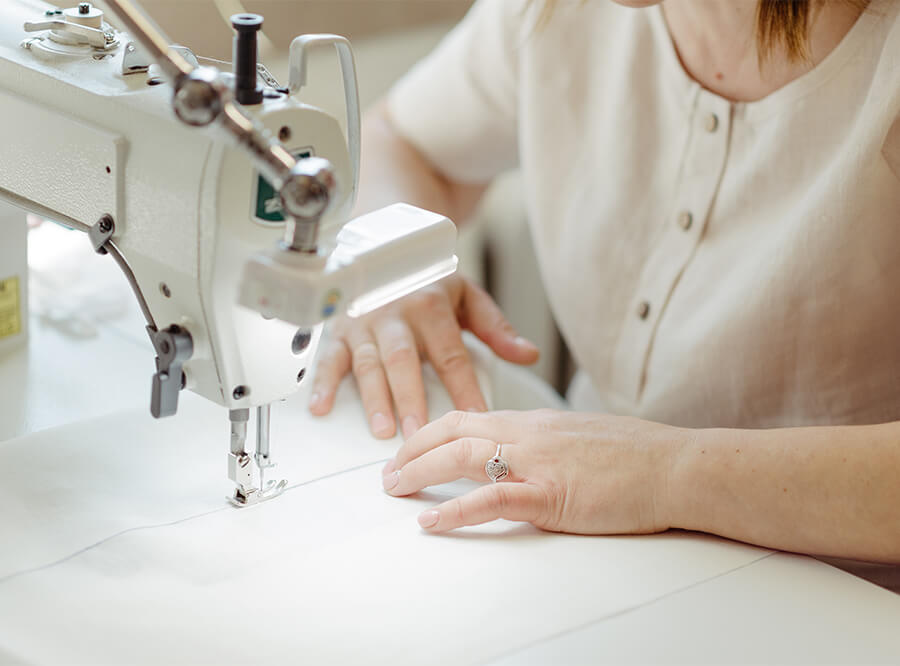8 things you should know about sustainable fashion
Importance of sustainable fashion
Fashion is one of the most polluting industries in the world. With the enormous amount of textile waste in the landfill, the tremendous amount of resources needed to grow certain fabrics, pollution, sweatshops, child labor, and other serious and devastating issues, it is clear that consumers and manufacturers have to change their practices to minimize the damage to ecological balance and seek for more humane, ethical, and sustainable fashion approach. In today’s post, we cover 8 important aspects you should know about sustainable fashion and why linen is an integral and promising future of fashion.
Terminology
Speaking in terms, sustainability is described as an avoidance of the depletion of natural resources to maintain ecological balance. It includes all phases of a product’s lifecycle – from growing, and dyeing to making, and exploitation of a certain product. In simpler words, sustainable fashion is about cutting CO2 emissions, addressing overproduction, reducing pollution and waste, supporting biodiversity, and ensuring that garment workers are paid a fair wage and have safe working conditions. Although there is no simple solution to damage caused by so-called fast fashion, some habits could be changed to pave the path toward a more sustainable fashion future.
Consequences of fast fashion | what makes it so hard to ditch?
Social media, fast fashion companies, television, and magazines glamorize the idea of having a large, walk-in closet, encourage to shop more, and criticize the idea of wearing the same outfit twice. Fast fashion businesses and media promote the idea of regularly shopping for new looks to encourage buyers to renew their wardrobes with low-priced items. Studies show that most of these garments last no more than 10 years. Worn-out items end up in landfills and consumers continue shopping for more clothes. Up until the mid-twentieth century fashion creators made 4-season collections only. It was way more methodical and less harmful. Nowadays, fast fashion brands produce about 52 “micro-seasons” a year—or one new “collection” a week. Take a moment to imagine 53 million tons of clothes released into the world annually. And this shocking number goes up every single year.
Sustainability | it is not only about purchasing less
The negative impacts of clothing extend beyond the landfill, the chemicals used in making, dyeing, and treating many fabrics are harmful to our environment and us. Fast fashion companies choose to produce their clothing in third-world countries to minimize the costs. Did you know that around 8,000 different synthetic chemicals are used to dye, bleach, and wet process garments? These chemicals often cause diseases or even deaths among farmers and inflict serious birth defects on their children. According to the Environmental Health Journal, conventional textile dyeing often releases “heavy metals and other toxicants that can adversely impact the health of animals in addition to nearby residents” into local water systems. This causes real danger to not only workers of clothing factories but to residents as well. Another important aspect to consider the man-made fabrics such as nylon, spandex, polyester, and others. These synthetic fibers are forms of plastic, and every time you wash fabrics made from these fibers, microplastics are breaking off, and many eventually end up in the oceans causing danger to our biodiversity.
Linen vs. Cotton | what makes linen an earth-friendlier option compared to cotton?
We all know that water is extremely important when it comes to growing and processing fabrics. Cotton is a leading fabric in the fashion industry and is highly dependent on water. What is more, it is usually grown in hot and dry areas where water is a scarce resource already. Now you may wonder if linen fabric is sustainable. Linen needs 60 % less water to grow compared to cotton. Also, every part of the flax can be used to create a worthwhile product. Nothing is wasted, and production is cost-effective. Flax is resilient and can grow in poor soil, using far less water in its consumption than cotton. Now you may mention organic cotton that can reduce the water consumption by 91% as opposed to non-ecological cotton. Please bear in mind that only 1% of global cotton production to date is organic. This is mainly due to the much higher cost and investments needed for materials and machinery.
Ethical issues related to fast fashion
Most of the sustainable fashion side-backs we mentioned include environmental issues, but it is also important to talk about fairness and ethics. Fast fashion companies violate basic human rights for the sake of fashion. We are all familiar with such issues as sweatshops, child labor, unsafe, unfair working conditions, unethical treatment, below living wages and so many more. But somehow, we tend to think that these are the issues of the past. Unfortunately, not. Fast fashion brands build their factories in third world countries to minimize their costs and produce garments as cheap as possible resulting in endless working hours, and unacceptable health & safety conditions. Moreover, verbal, and physical abuse are still common practices in many parts of the industry.
Linen Handmade Studio and sustainability
Now that we explained the risks and impact of fast fashion, it is time for us to clarify what we, as a company, do to support sustainable fashion. To start with, we only work with 100 % natural linen fabric we get from local manufacturers. It is biodegradable, highly durable, and OEKO-TEX standard 100 certified meaning there are no harmful chemicals in it. Our sewing machines are energy-saving and we work with made to order principle allowing us to only sew on demand. By applying smart cutting techniques, we use even the smallest scraps of fabric. Our linen garments are made in timeless, classic designs and from natural, high-quality, durable fabric that will last for many years to come. Let us not forget about our compostable packaging. And if you are wondering, all items are made in a small studio here in Lithuania. Our workers receive fair salaries and are treated with love and absolute respect. We ensure safe working conditions, access to healthcare and time offs.
You can be the change | how to practice sustainable fashion?
It often seems that supporting sustainable fashion takes a lot of time and effort. Even a change in the small habits you have can have a positive impact. Start by purchasing less and purchasing better. This means investing in quality and only buying clothing items you truly need. If you can, choose natural fabrics instead of man-made ones. Not only it is better for your health, but natural fabrics are biodegradable too. If the item is made from mixed fabric, there’s a high chance it cannot be recycled and will end up in a landfill. It is normal to get bored by the clothes that you have or experience an urge to buy something for a special occasion coming up. If you are no longer satisfied with the clothes that you have in your closet, don’t throw them out – resell them on the internet, donate them to a charity shop, or gift them to a family member or a friend. Extending its lifecycle is better than the item ending up in a landfill and most importantly, that dress you are about to throw out might bring so much happiness and joy to someone else. If your clothes are worn-out and can no longer be repaired or reused, look for recycling schemes specifically for those items, where possible. We understand that shopping sustainably is a pricier option that might take a bit of saving, here’s how second-hand shopping comes in handy. Not only will you extend the life of these garments and reduce the environmental impact of your wardrobe as a result, but you can also find one-of-a-kind pieces that no one else will have in their closet.
What is in there for you?
Oh, where do we even start? By supporting sustainable fashion brands, you are also supporting people who are on the run to change the world. People who are putting their selfish needs aside to try and change the fashion world for the better. People who care about the future of our environment. By choosing sustainable fashion, you are paying attention to everyone from the environment to the workers and communities where the clothing is produced. Creating a time capsule wardrobe from high-quality, sustainable, and timeless designs will have a positive effect on your finances as well. It will save you money in the long run and save the time you’d spend scrolling online stores or visiting physical stores each week. A time capsule closet guarantees that you will always have something to wear. Each piece is easily combined with the other garments meaning no more headaches when getting ready in the morning. These are only a few aspects that sustainable fashion tackles and your actions can make a difference too. Why not start today?
We truly hope this post was helpful and interesting. If you have ideas to share and discuss – feel free to reach out.
